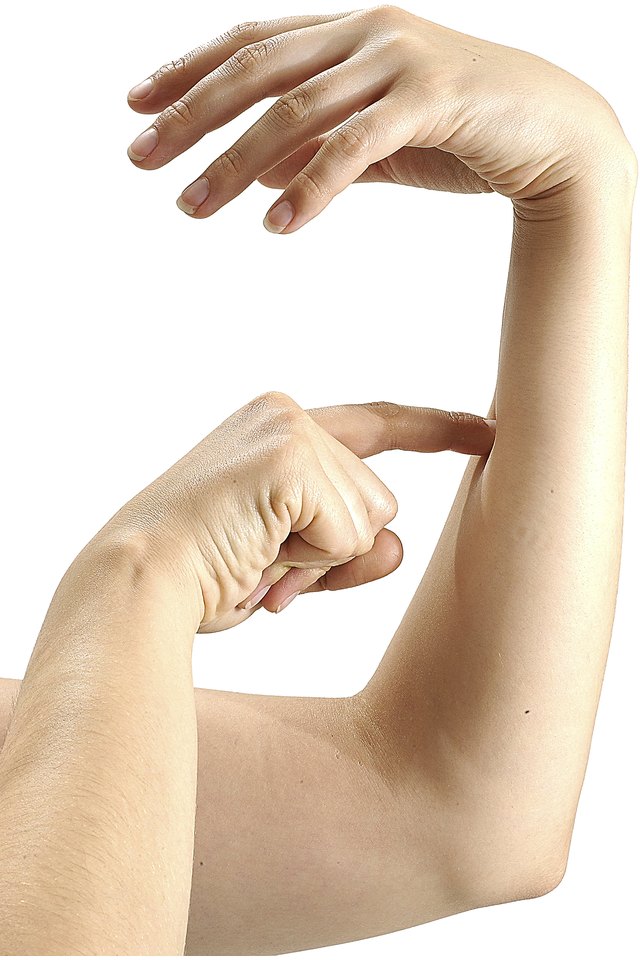What does fact checked mean?
At SportsRec, we strive to deliver objective content that is accurate and up-to-date. Our team periodically reviews articles in order to ensure content quality. The sources cited below consist of evidence from peer-reviewed journals, prominent medical organizations, academic associations, and government data.
The information contained on this site is for informational purposes only, and should not be used as a substitute for the advice of a professional health care provider. Please check with the appropriate physician regarding health questions and concerns. Although we strive to deliver accurate and up-to-date information, no guarantee to that effect is made.
Exercises for the Pronator Teres

The pronator teres is one of several muscles that make up your forearm. It originates in both the humerus, or upper arm bone, and the ulna, one of two forearm bones, inserting into the other forearm bone --- the radius. The pronator teres helps stabilize the elbow. Exercises that strengthen and improve flexibility of the pronator teres may help alleviate elbow pain.
Function
The pronator teres rotates your forearm so your palm faces upward or downward. A typical everyday use of the pronator teres is turning a screwdriver. The pronator teres also flexes your forearm at the elbow. Activities such as golf, racquet sports, rope or rock climbing and weightlifting involve significant use of the pronator teres.
Incidental Exercises
Compound multi-joint exercises that engage your upper back, biceps and forearms also work the pronator teres. These include body-weight exercises such as pullups, neutral-grip pullups, reverse-grip pullups or chinups, and inverted rows. Weightlifting movements include bent-over rows, single-arm rows, lat pulldowns and low pulley rows. Biceps exercises such as barbell and dumbbell curls also work your pronator teres.
Isolation Exercises
Strengthen your pronator teres with an isolation exercise that involves rotating your forearm. Grasp a dumbbell with your thumb against the inner surface. Sit on a bench or chair, bend your arm and place your upper arm on the backrest with your thumb facing upward. Rotate the dumbbell so your thumb is facing down, then return to your starting position. Repeat for your desired number of repetitions then switch arms.
Stretches
Overuse of the forearm may thicken the pronator teres and cause it to compress the medial nerve that is located beneath. According to the Institute for Integrative Healthcare Studies, this may cause pronator teres syndrome that manifests in forearm, wrist and hand pain. Stretching exercises may bring some relief. To stretch the pronator teres and other forearm muscles, extend your right arm in front of you with palm facing downward. Grab your right hand with your left hand and gently pull down until your palm is facing you. You should feel a stretch on your upper forearm. Hold for a count of five. Next, rotate your forearm so your palm is facing upward. Grab and pull your hand down until your palm is facing outward. You should feel a stretch on your inner forearm. Hold for a count of five. Switch arms and repeat.
References
Writer Bio
Ollie Odebunmi's involvement in fitness as a trainer and gym owner dates back to 1983. He published his first book on teenage fitness in December 2012. Odebunmi is a black belt in taekwondo and holds a bachelor's degree in economics from Kingston University in the United Kingdom.
